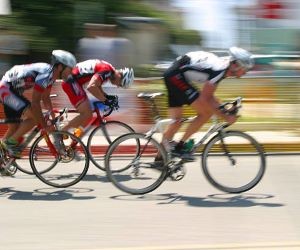Master endurance cycling in tropical climates with effective strategies. Learn hydration, heat adaptation, and training tips for peak performance.
HOW DO I KEEP TRAINING WHILE TRAVELING?
Maintaining fitness while traveling can be challenging, but with the right mindset, planning, and flexibility, you can keep your training consistent. This guide provides actionable tips for workouts, equipment alternatives, nutrition, and routines that fit travel schedules.

Why maintaining fitness while traveling matters
Travel often disrupts daily routines, making it easy to skip workouts. Consistent training, however, preserves muscle mass, endurance, and mental clarity. Even short sessions prevent setbacks and keep your fitness goals on track.
Physical health benefits
Regular exercise during travel helps maintain cardiovascular health, flexibility, and strength. It also reduces fatigue from long flights or road trips and supports better sleep patterns, which are often disturbed while traveling.
Mental and emotional advantages
Exercise releases endorphins, boosting mood and reducing stress. Travel can be overwhelming, and keeping a workout routine helps maintain focus, reduces anxiety, and improves overall energy levels.
Preserves muscle and strength
Supports cardiovascular endurance
Improves sleep and recovery
Enhances mood and reduces stress
Creating a flexible travel workout plan
Planning ahead is the key to maintaining fitness on the road. Identify available resources, time slots, and goals before your trip. This approach ensures you can fit training into even the busiest travel schedule.
Assess your environment
Check your destination for gyms, parks, trails, or hotel fitness centers. If facilities are limited, plan bodyweight routines that require minimal space and no equipment. Adaptability is essential.
Set realistic goals
Expect shorter workouts and varying intensity. Even 20–30 minutes of consistent activity can maintain fitness. Focus on mobility, strength, and cardiovascular exercises that can be done anywhere.
Research local gyms or fitness classes
Identify safe outdoor workout spaces
Pack portable equipment like resistance bands
Schedule workouts during free time or mornings
Training effectively with limited tools
Travel often limits access to equipment, but bodyweight exercises and small tools can maintain strength and endurance. Resistance bands, jump ropes, and suspension trainers are lightweight and portable.
Bodyweight routines
Push-ups, squats, lunges, planks, and burpees are highly effective for full-body conditioning. Combine movements into circuits for a challenging workout that doesn’t require a gym.
Portable equipment tips
Bring bands or a travel yoga mat. Resistance bands can replicate weight exercises, while a mat supports mobility, stretching, and floor exercises. Use furniture creatively for dips or elevated push-ups.
Resistance band rows and presses
Bodyweight squats, lunges, and push-ups
Core circuits: planks, mountain climbers, leg raises
Jump rope for cardiovascular conditioning
YOU MAY ALSO BE INTERESTED






